Gardens to Visit This Spring

Here’s our pick of the beautiful, and more unusual and historic gardens to visit across the North East and Yorkshire
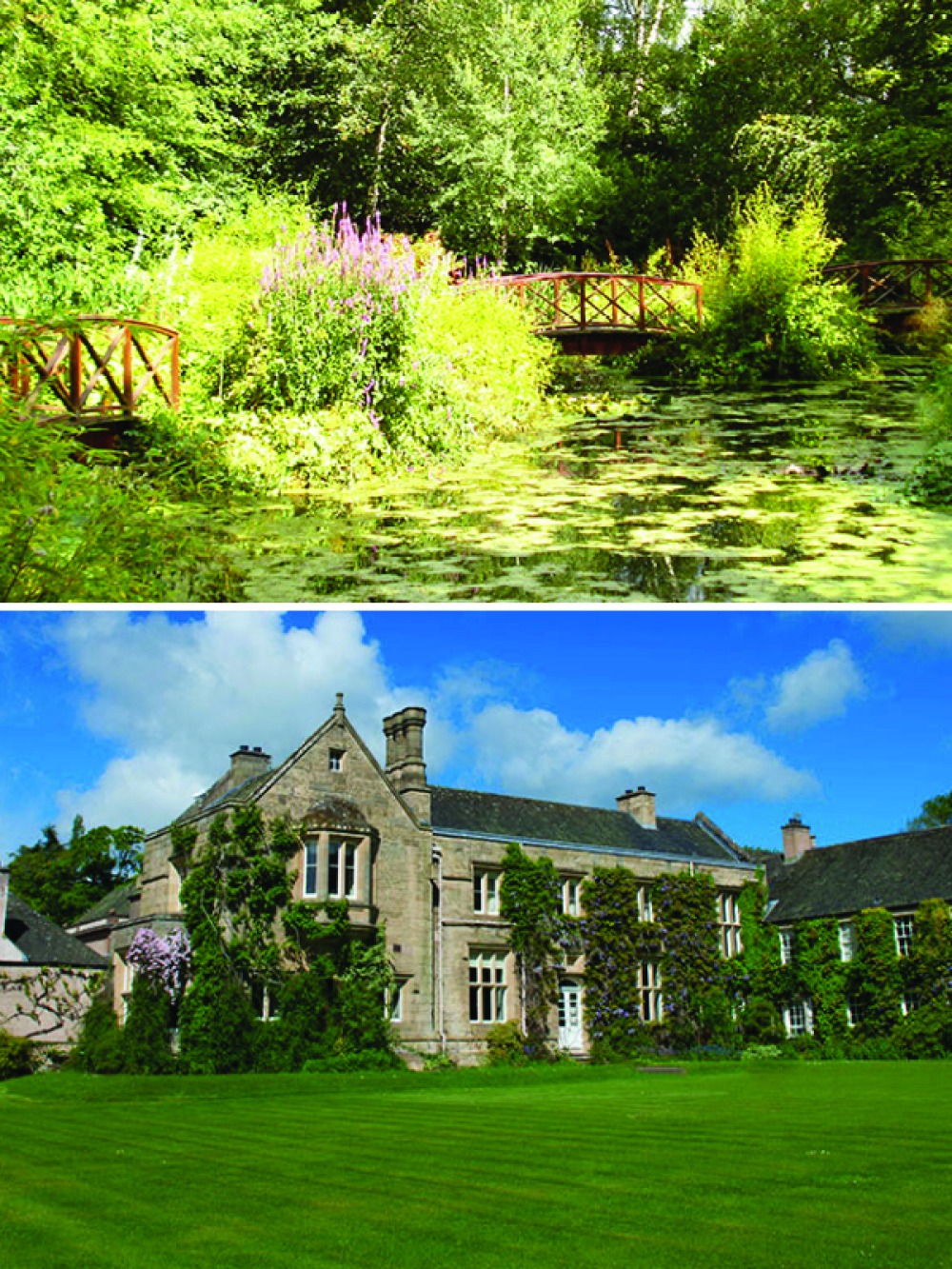
Monteviot House & Gardens
The gardens of Monteviot House provide an extraordinary 30-acre foil to the wonderful background which is the curving River Teviot below, and the hills beyond. Surrounding the house, and spilling down through woodland to the flood plain, the once formal Victorian gardens have been reimagined for more contemporary living and are actually made up of a number of distinctly different garden spaces, including the Rose Garden, Herb Garden and the unusual Dene Garden, each one leading carefully to the next, and providing interest from April right through to October. There’s also an Arboretum and pretty Laburnum Tunnel. Appealing to gardeners and non-gardeners alike, each special area is carefully designed and crammed with interesting plants and lots of colour which constantly changes with the seasons. We love the intriguingly-named Garden of Persistent Imagination, the newest space here, which incorporates imaginative stone structures and specialist plant sections and is intended to provide a space for quiet contemplation and meditation. Open to the public from 1st April, go soon and you’ll find a vast variety of daffodils, as well as striking displays of fritillaries, a large collection of interesting and specialist shrubs and trees, and imaginative water features which complement the river below. The house itself is home to the Marquis of Lothian and the Kerr family. The 1st Earl of Ancrum was tutor to Charles I and remained staunchly loyal to the king during the Civil War, dying in penury in 1654. Cromwell paid his funeral expenses. The title of Marquis was granted to the 3rd Earl of Ancrum in 1701 and the Monteviot Estate has remained in the family since the very beginning. It is open to visitors at certain times but please check for further details for the 2022 season.
Monteviot House, Jedburgh TD8 6UH
01835 830380
monteviot.com
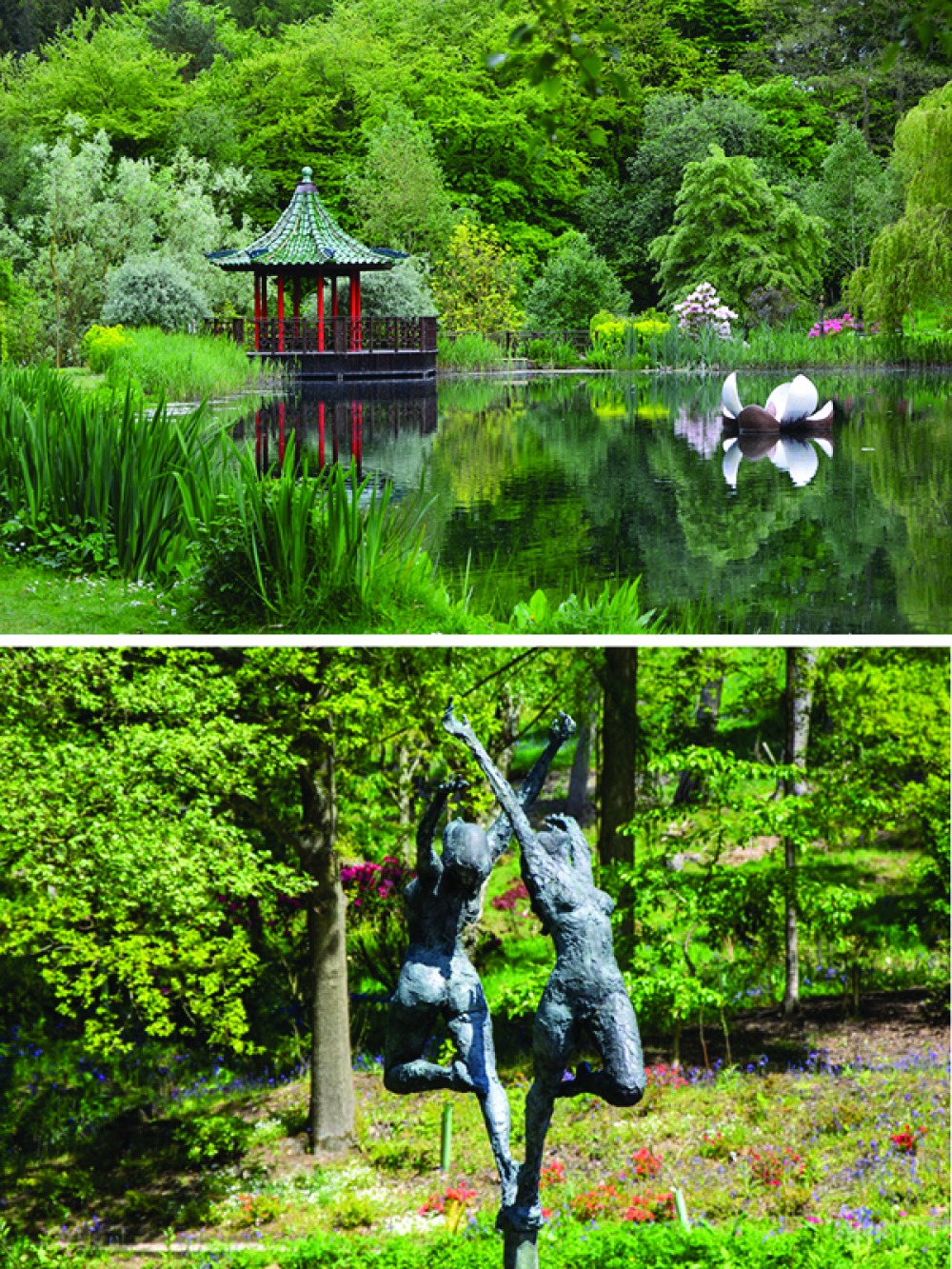
Himalayan Gardens & Sculpture Park
A breathtaking 45 acres of garden inspired by the Himalayas, and home to more than 85 contemporary sculptures, the garden is thought to have the largest collection of rhododendrons, azaleas and magnolias in the North with over 20,000 plants, some 1,400 rhododendron varieties, 250 different azaleas and 150 magnolia species. With something new at every turn and in every corner, there are beautiful woodland walks, an arboretum, three lakes and breathtaking views everywhere. Built in Bali, the famous red pagoda is a favourite with many visitors and is complemented by its serene, lakeside setting. Elsewhere, there’s a Himalayan shelter, constructed in cedar wood and reflective of the buildings found in Himachal Pradesh in North West India. The local artisans of the area are famous for their woodcarving and the original examples on the shelter’s balcony are between 80 and 100 years old. In the garden’s arboretum, you can see 52 varieties of oak (one is directly descended from King Alfred’s oak at Blenheim Palace which is more than 1,000 years old), 25 limes, 20 birches and unusual trees such as Chitalpa, a hybrid of the Cigar Tree. Each sculpture here, from the bronze leopard to the floating magnolia, has been positioned within the landscape in a way that relates to and reflects the space around it. The garden and sculpture park was donated to a charitable trust by Peter and Caroline Roberts, who wanted to preserve the space and to enable visitors to enjoy the collection of rare plants and sculptures, and the trust works tirelessly to ensure the advancement of horticulture, the arts and environment and wildlife for everyone.
Grewelthorpe, Ripon HG4 3DA
himalayangarden.com
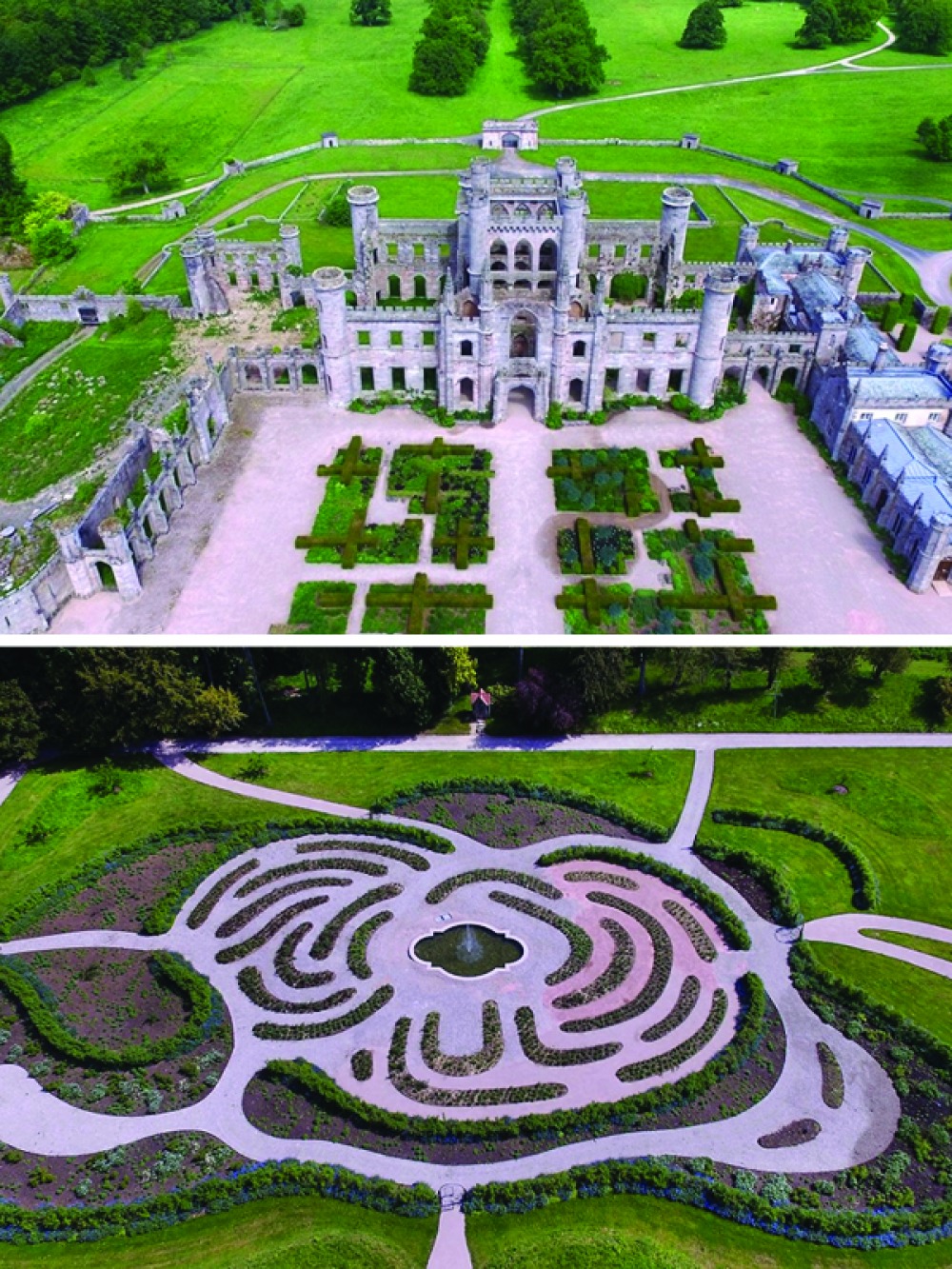
Lowther Castle and Gardens
The scale and beauty of the spectacular ruin that is Lowther Castle are reflected in the scope and setting of its 130-acre gardens. Formally laid out in the 17th century by the first Viscount Sir John Lowther, a profound thinker and significantly, a committed vegetarian, the Knot Gardens were dedicated to growing fruit and vegetables for the kitchens at the hall. History plays a big part throughout the gardens, and relics such as the Roman bath and stone columns are from the mid-Victorian period whilst the Rock, Japanese and Iris gardens are reminders of the Edwardian era when the incumbent ‘Yellow Earl’ desperately tried to keep up with the horticultural fashions of the day. The Emperor’s Drive was commissioned to welcome the German Kaiser on one of his visits to Lowther Castle. Sadly, with much of the family fortune squandered, the castle and gardens were abandoned in 1936 and wartime occupation saw lawns covered in concrete, whilst in the immediate post-war period the castle was demolished (every chimney pot, fireplace and door handle was sold for death duties) and the gardens filled with commercial chicken sheds and a pig farm. But in 2008, Lowther’s gardens were marked out for rescue and under the guidance of Chelsea Gold winner Dan Pearson, a restoration masterplan was put in place. Today, the gardens are amongst the most beautiful in the North.The courtyard is now dotted with a series of clipped hornbeam sentinels; the Parterre planted with bold combinations of herbaceous perennials, woolly grasses and clipped yews; the Garden-in-the-Ruins is a fine example of naturalistic planting with a collection of botanical rarities; and the Rose Garden, inspired by the Sleeping Beauty myth, is planted in the shape of an old English Rose. At this time of year you can see Amelanchier canadensis in all their glory planted near the Rose Garden, Brunnera macrophylla with their heart-shaped basal leaves mingling with the elegant golden Erythronium Pagoda, and a thriving colony of Trilliums which can be found in the Rock Garden.
Lowther Castle, Penrith CA10 2HH
01931 712192
lowthercastle.org
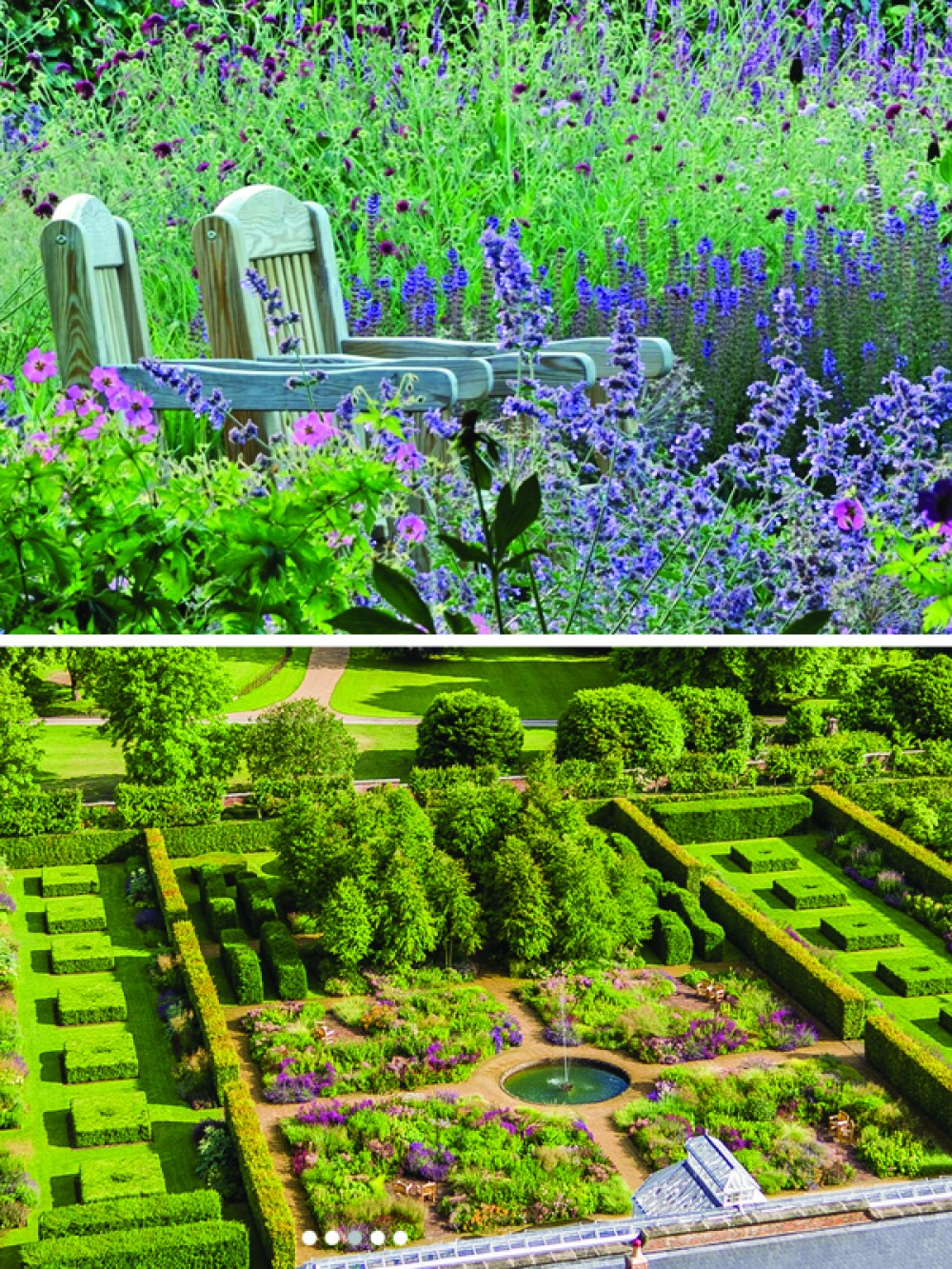
Scampston Hall
With an award-winning garden, Scampston Hall is one of the finest Regency country houses in North Yorkshire and contains many fine works of art, furniture and porcelain. Still a family home, the house dates back to 1795 and is still in the hands of the Legard family who are determined to look after this special property in the hope it can remain in the family for many more generations. The Walled Garden is a beautiful, contemporary space designed by Dutch plantsman Piet Oudolf and set within the 18th century walls of the original kitchen garden. Unashamedly modern, it still manages to complement the adjacent 18th century Capability Brown parkland. Derelict for nearly 50 years, the planning for the new walled garden began in 1999 and opened to the public in 2005 to international acclaim – it is widely thought of as one of the most beautiful in Yorkshire. The parkland here incorporates a series of lakes and naturalistic planting with fine examples of native trees, and a number of designated trails allow visitors to discover some of the parkland’s most interesting features.
Malton YO17 8NG
scampston.co.uk
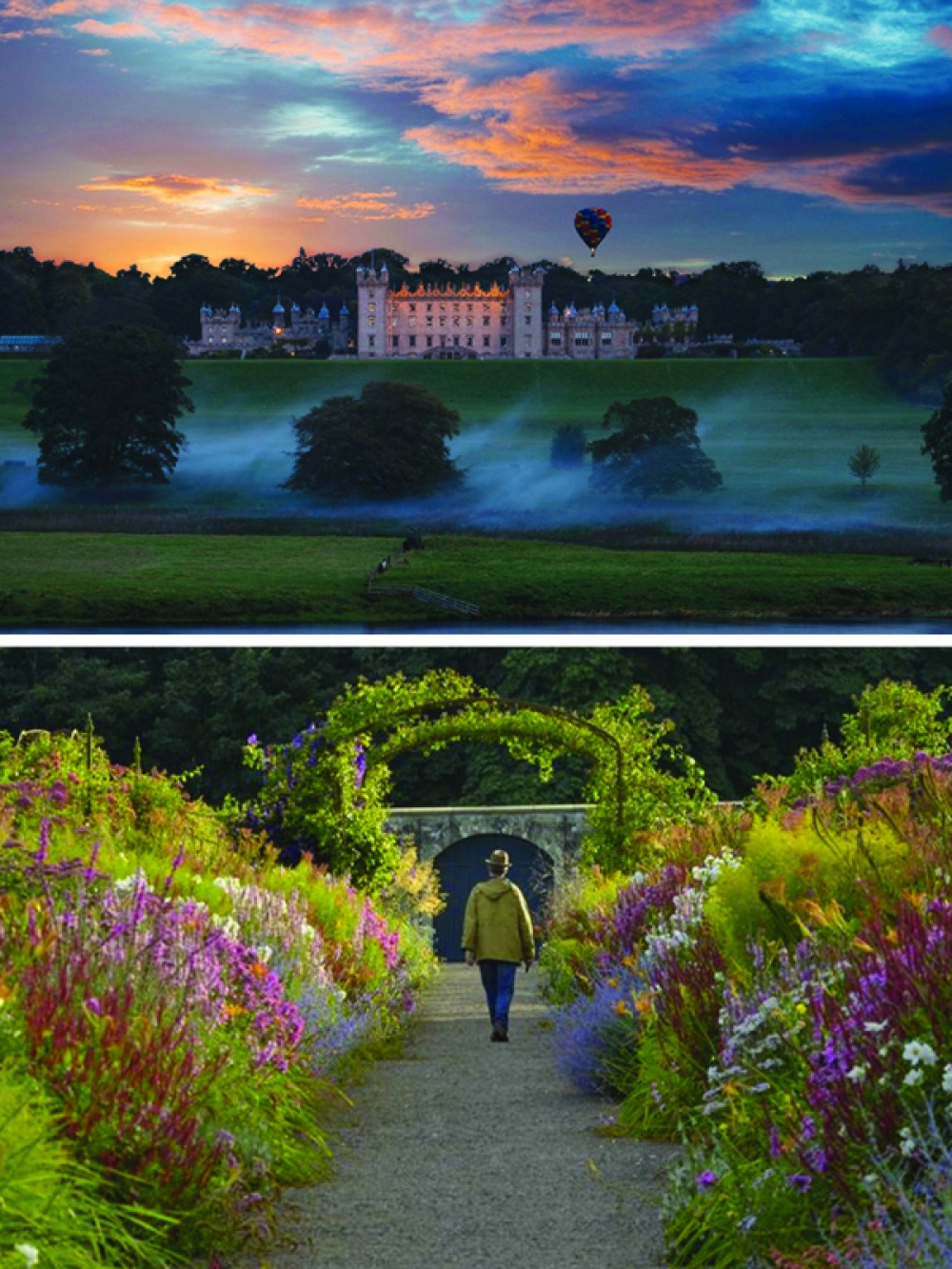
Floors Castle & Gardens
The historic gardens and grounds of Scotland’s largest inhabited castle combine one of the finest examples of a Victorian Kitchen garden within the castle’s four-acre Walled Garden with a more formal Millennium Garden, with its French-style parterre. A riot of colour most of the year, the Walled Garden is home to herbaceous borders, packed with vibrant blooms throughout spring and summer, and impressive glasshouses which date back to the 1850s, where you’ll find fresh fruit and vines growing. There’s a new Tapestry Garden, with a clever mix of planting, meandering paths and quiet, hidden corners for visitors to explore, and the beautiful Star Plantation with a variety of hardwood trees, woodland shrubs and open glades. The more formal Millennium Garden was created to celebrate the new millennium, and features the initials of the 10th Duke and Duchess of Roxburghe. It’s also where you’ll find The Queen’s House – the garden’s charming summerhouse built for a visit by Queen Victoria in 1867, one of Floors’ most historic events. One of the most iconic examples of Scottish architecture and home to the Duke of Roxburghe, the castle is open to visitors from April.
Floors Castle, Kelso, Roxburghshire TD5 7SF
01573 223 333
floorscastle.com
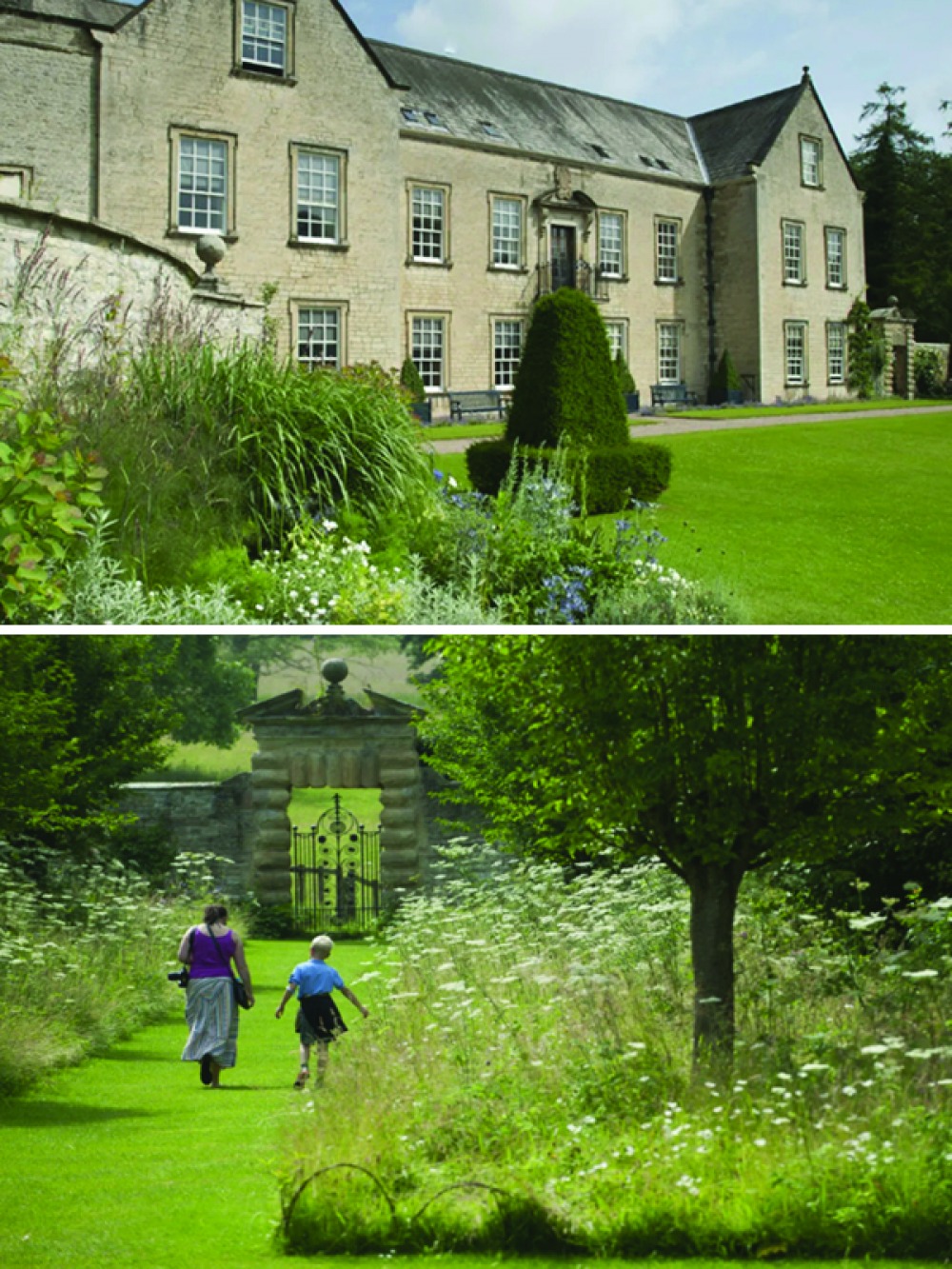
Nunnington Hall
Spring is the perfect time to visit Nunnington Hall as the wild flower meadows are awash with snake head fritillary, Camassia and dancing daffodils. Wander among the herbaceous borders, picnic beside the croquet lawn and enjoy the peace, only punctuated by Nunnington’s sometimes noisy peacocks, and the bees from the hall’s beehives. The garden has been fully organic since 2002, using traditional horticultural methods whilst still embracing modern techniques, and you can see much of this work up close as you explore the various different parts of the garden, including the vital four-bay composting system, the wormery and organic veg patch. Each year sheeps’ fleece is packed around the base of the fruit trees in the garden’s orchard, acting as a fantastic organic mulch. It also help to keep weeds as bay and retain moisture in the soil. Birds, mice and bees also love it as they collect the luxurious bedding for their nests. The garden sits alongside the River Rye which is home to plenty of wildlife including swans, otters and kingfishers. The hall itself dates back to Tudor times but over the past 450 years the house and estate have been altered to suit a succession of owners and tenants. This year marks 100 years since the last major renovations took place at Nunnington, and there is a special exhibition to mark the event. With many original features, and well worth a visit, Nunnington Hall is also home to one of the world’s finest collections of miniature rooms, the Carlisle Collection, in the attic.
York YO62 5UY
nationaltrust.org.uk

Raby Castle Park and Gardens
Set within 200 acres of parkland, Raby Castle is home to an abundance of wildlife, including several herds of wild red and fallow deer. Sadly, the 18th century ornamental Walled Garden is closed for redevelopment until 2023, but there’s still plenty to see at Raby. Explore the East Garden’s herbaceous borders and numerous tree species including the liriodendron tulipafera, or tulip tree, and the Wedding Day Rose, whose petals transform through three colour changes. Here you’ll also find the new conservatory built to the original 19th century design, formal lawns and an informal heather and conifer garden. The castle’s Kitchen Garden is home to a range of delicious fruits, including raspberry canes and the famous Raby redcurrant, whilst in the centre of the South Terrace is a fine wrought iron gate bearing the monogram of the 1st Lord Barnard. Designed by James Gibb, it was actually commissioned in the 18th century for Shipbourne Church in Kent but was gifted to Raby in 1894. Raby Castle is one of the most impressive, intact castles in the North, built in the 14th century by the powerful Nevill family. Purchased from the Crown in 1626, it is home to the Vane family, the present incumbent being the 12th Lord Barnard, and is open to visitors between March and October. The brand new adventure playground, the Plotter’s Forest, is due to open for Easter and is an ambitious mix of forest trails, high walkways, towers, turrets and treetop tunnels.
Raby Castle, Staindrop DL2 3AH
01833 660202
raby.co.uk

Hovingham Hall
Built by Thomas Worsley – a close friend of King George III, who was obsessed with horses and architecture – the Palladian Hovingham Hall and its gardens remain an extraordinary fusion of both interests – you even enter through the beautiful Riding School. The house has retained many of its architectural features and from the famous painted dome ceiling to the Drawing Room, there are example of stunning workmanship throughout. Also unusually, the front lawn is in fact a cricket pitch, reputed to be the oldest continuously played pitch on private ground in the country. North and west of the house are the beautiful gardens with magnificent yew hedges, lawns and expansive flower beds, and a magnificent 17th century dovecote. Hovingham Hall is the family home of HRH The Duchess of Kent.
Hovingham YO62 4LX
hovingham.co.uk







